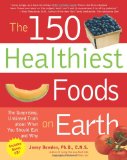Plant Secondary Metabolites
Plant secondary metabolites is a generic term used for more than 30,000 different substances which are exclusively produced by plants. The plants form secondary metabolites e.g. for protection against pests, as colouring, scent, or attractants and as the plant's own hormones. It used to be believed that secondary metabolites were irrelevant for the human diet. The importance of these substances has only recently been discovered by scientists. Secondary metabolites carry out a number of protective functions in the human body. Plant secondary metabolites can boost the immune system, protect the body from free radicals, kill pathogenic germs and much more.
In contrast to the primary metabolites (carbohydrates, fats, proteins, vitamins and mineral nutrients) secondary metabolites do not have nutrient characteristics for human beings. They are usually found in very small amounts but have an effect on humans.
Secondary metabolites have a scientifically proven effect on health. However many of these effects are unknown. The exact requirement of the individual substances is likewise unknown. A diet which is rich in plant foods contains a variety of secondary metabolites and contributes to protecting the body against cancer and cardiovascular illnesses. Secondary metabolites and their effects are currently being intensively researched.
top 

The 150 Healthiest Foods on Earth: The Surprising, Unbiased Truth About What You Should Eat and Why,
Jonny Bowden Ph.D. C.N.S

Eat, Drink, and Be Healthy: The Harvard Medical School Guide to Healthy Eating
M.D. Walter C. Willett

Nutrition For Dummies
Carol Ann Rinzler

The CalorieKing Calorie, Fat, & Carbohydrate Counter
Allan Borushek
|
Plant Secondary Metabolites: Sources and Effects
- Carotenoids
Carotenoids are organic pigments occurring in plants and are mostly found in red, orange and yellow fruits and vegetables. Other vegetables such as broccoli, spinach or curly kale also contain carotenoids. Carotenoids have antioxidative effects and prevent cancer. In addition to this they boost the immune system and reduce the risk of getting heart attacks.
- Phytosterols
Phytosterols are found in plant foods such as sunflower seeds, sesame, nuts and Soya beans. Phytosterols protect against colon cancer and lower cholesterol levels. Phytosterols are chemically similar to cholesterol and therefore they compete against each other for absorption in the body.
- Saponins
Saponins are flavour additives, which are found in legumes and spinach. Saponins boost the immune system, lower the cholesterol levels in the blood and reduce the risk of getting intestinal cancer.
- Glucosinolates
Glucosinolates are flavour additives, which are found in all types of cabbages, mustard, radish and cress. Glucosinolates prevent infections and inhibit the development of cancer.
- Flavonoids
Flavonoids are organic pigments occurring in plants which give plants a red, violet or blue colour. Flavonoids have a particularly broad spectrum of efficacy. Flavonoids inhibit the growth of bacteria and viruses, protect the cells against the damages of free radicals, protect against cancers and heart attacks, have a repressive effect against inflammations and they influence blood coagulation.
- Protease-inhibitors
Protease-inhibitors are found in plants that are rich in protein such as legumes, potatoes and wheat and they inhibit the decomposition of protein. Protease inhibitors protect the body against cancers and regulate the blood sugar levels.
- Terpenes
Terpenes are plant flavours for e.g. the menthol in peppermint oil or the essential oils in herbs and spices. Terpenes decrease the risks of cancer.
- Phytoestrogens
Phytoestrogens are natural plant hormones which are similar to the sexual hormones. Phytoestrogens are mostly found in wheat, legumes and wheat products. Phytoestrogens protect the body against hormonal dependant cancers such as breast, uterine and prostrate cancer.
- Sulphides
Sulphides are compounds containing sulphur which are mostly found in plants that belong to the lily family such as onions, leeks, asparagus and garlic. Sulphides inhibit the growth of bacteria, lower cholesterol levels, protect the body from free radicals and have preventive effects against cancer.
- Phytic acid
Phytic acid is found in wheat, legumes and flaxseeds. Phytic acid was considered undesirable for a long time because it binds trace elements such as iron and zinc and it also affects various digestive enzymes. However new studies have proved that phytic acid has an antioxidant effect in the large intestine.
top  |

